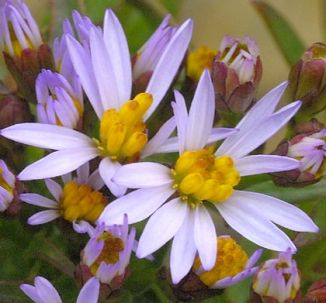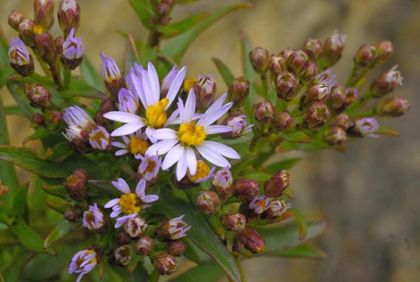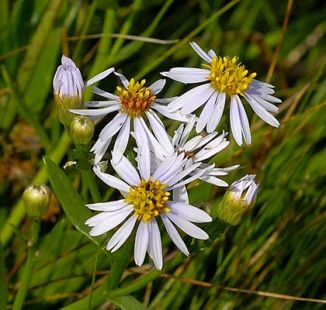This is a clever little plant which spends a good part of its life standing with its feet, and sometimes more than its feet, in sea water. Other times it manages to gain a foothold on cliff faces on what appears to be remarkably little soil. Sea Aster is a hairless, fleshy perennial which can grow to 1m high. It has pale purple-blue daisy-like flowers (10-20mm across) which are borne in small loose clusters and bloom from July to October. The purple-blue ray florets have a slightly untidy look and in fact sometimes are completely absent while the tightly-packed disc florets at the centre are bright yellow. The root leaves are oblong while the stem leaves are dark green, untoothed and linear-lanceolate with a prominent midrib. This plant is to be found in coastal saltmarshes, estuaries and on coastal cliffs. Formerly known as Aster tripolium, it is a native plant which belongs to the family Asteraceae
My first record of this plant is from 1976 when I found it growing by the sea at Dalkey, Co Dublin. I photographed it in the Burren and at Saltmills, Co Wexford in 2006.
If you are satisfied you have correctly identified this plant, please submit your sighting to the National Biodiversity Data Centre




